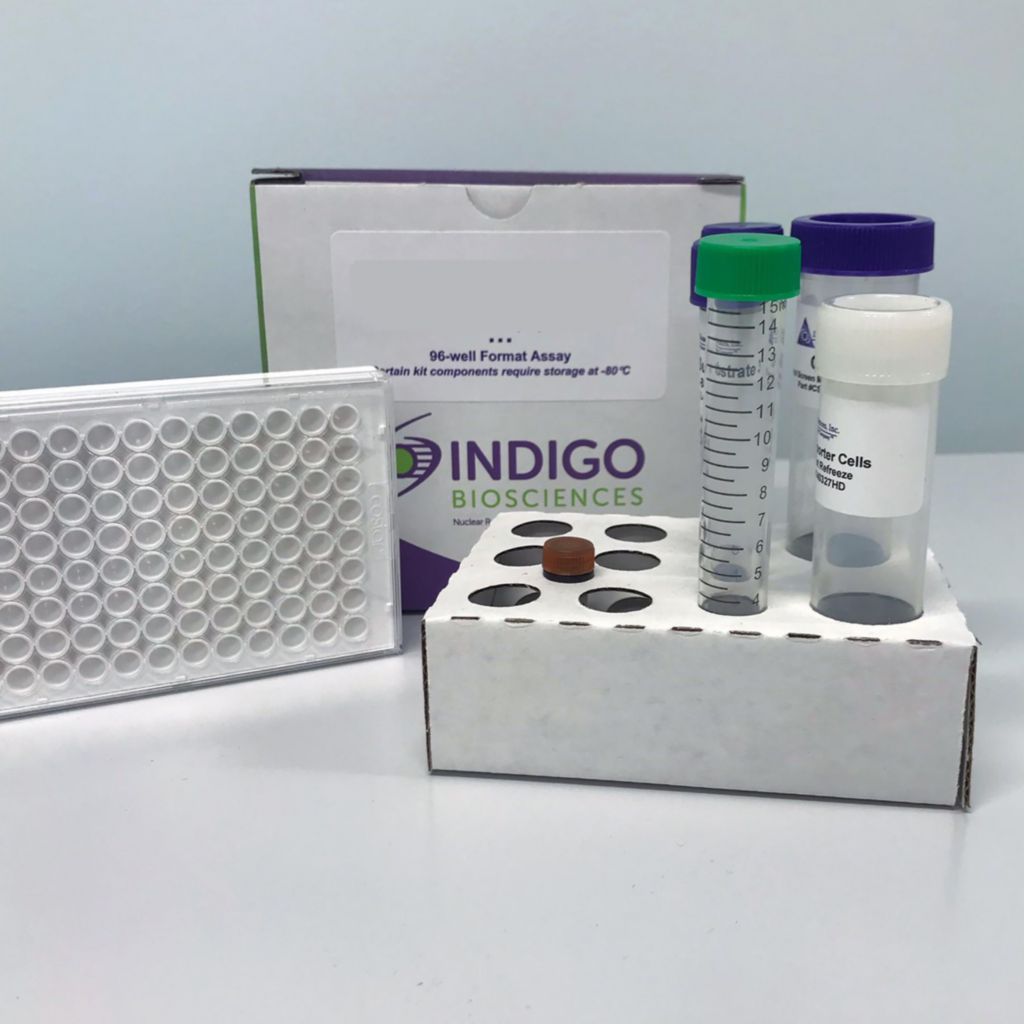Product Description and Product Data
INDIGO’s Human Estrogen Receptor Panel (ER alpha, ER beta) assay kit is an all-inclusive firefly luciferase reporter assay system that includes in addition to reporter cells for each ER, optimized cell culture medium, a medium for diluting test compounds, 17-β-estradiol control agonist, stable-glow luciferase detection reagent, detailed protocol, Protocol Quick Guide, and a cell culture-ready assay plate in strip-well format so that (if preferred) ER alpha and ER beta assays may be performed at different times. This panel contains sufficient materials to perform 48 ER aplha assays and 48 ER beta assays in 96-well plate format.
Features
Clear, Reproducible Results
- All-Inclusive Assay Systems
- Exceptional Cell Viability Post-Thaw
- Consistent Results Lot to Lot
Product Specifications
| Target Type | Nuclear Hormone Receptor | ||
| Species | Human | ||
| Receptor Form | Native | ||
| Assay Mode | Agonist, Antagonist | ||
| Kit Components |
| ||
| Shelf Life | 6 months | ||
| Shipping Requirements | Dry Ice | ||
| Storage temperature | -80C |
Data
Target Background
Estrogen receptor alpha (ER-alpha), also known as NR3A1 (nuclear receptor subfamily 3, group A, member 1), is a nuclear receptor which is activated by the sex hormone estrogen. ER-alpha is encoded by the human gene ESR1 (Estrogen Receptor 1).The estrogen receptor (ESR) is a ligand-activated transcription factor composed of several domains important for hormone binding, DNA binding, and activation of transcription. Alternative splicing results in several ESR1 mRNA transcripts, which differ primarily in their 5-prime untranslated regions. The translated receptors show less variability.
Estrogen receptor beta (ER-beta), also known as NR3A2 (nuclear receptor subfamily 3, group A, member 2), is a nuclear receptor which is activated by the sex hormone estrogen. ER-beta is encoded by the human gene ESR2 (Estrogen Receptor 2). This gene encodes a member of the family of estrogen receptors and superfamily of nuclear receptor transcription factors. The gene product contains an N-terminal DNA binding domain and C-terminal ligand binding domain and is localized to the nucleus, cytoplasm, and mitochondria. Upon binding to 17beta-estradiol or related ligands, the encoded protein forms homo- or hetero-dimers that interact with specific DNA sequences to activate transcription. Some isoforms dominantly inhibit the activity of other estrogen receptor family members. Several alternatively spliced transcript variants of this gene have been described, but the full-length nature of some of these variants has not been fully characterized. ER-β is expressed by many tissues including blood monocytes and tissue macrophages, colonic and pulmonary epithelial cells and in prostatic epithelium and in malignant counterparts of these tissues.ER-β may have anti-proliferative effects and therefore oppose the actions of ER-α in reproductive tissue.[4] ER-β may also have an important role in adaptive function of the lung during pregnancy.
Product Documentation
Also available as a service
